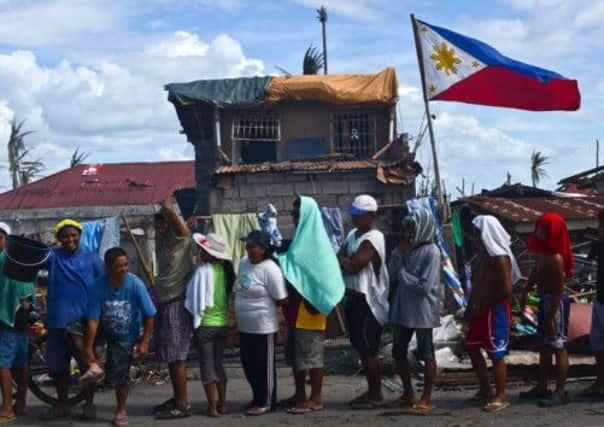Typhoon-devastated Philippines rebuild could cost £3.6bn


Economic planning minister Arsenio Balisacan said he would “not be surprised” if the cost of rebuilding reached that level.
Meanwhile, ten days after one of the most powerful typhoons ever recorded, some residents of remote villages in Eastern Samar province said they were still waiting for aid.
Advertisement
Hide AdAdvertisement
Hide AdThe Philippines is facing a huge rebuilding task in the wake of Typhoon Haiyan, which killed at least 3,974 people and left 1,186 missing, with many isolated communities yet to receive significant aid despite an international relief effort.
In ravaged villages along the coast of Eastern Samar, heart-breaking, hand-written banners plead for attention. “Help us,” said one in large, silver-painted capitals on blue plastic sheeting. “We need food.”
The storm surge swept away dozens of flimsy timber homes in Hernani, a small community of about 200 farmers and fishermen, killing many.
One family said there had been one delivery of food and water. Others said there had been none.
Ten members of the Candido family lost their home and now shelter from the sun and torrential rain under a plastic sheet. “We don’t have any choice over our future,” Nestor Candido, 39, said. “All we do is plant vegetables and harvest coconuts and now this … It will take time to get another harvest.”
Just a few hundred yards away, all that remains of Eida Oracey’s home of ten years is the kitchen sink and the toilet. “We don’t have shelter, clothes or food. It’s just too much,” she said.
While aid packages have begun to reach more remote areas, much of it carried by ancient air force helicopters, the UN said people were still going hungry in some mountainous provinces. Information about several provinces in the west of the Visayas region remained “limited”, with 60 per cent of people in towns in the northeast part of Capiz province needing food support, the UN said.
“Basically, we’ve provided everyone with relief,” said Eduardo del Rosario, director of the National Disaster Risk Reduction and Management Council, in Manila. “What we are doing right now is sustainment.”
Advertisement
Hide AdAdvertisement
Hide AdThe World Food Programme said it had reached 1.9 million people in need of food. “There are many more people who impacted by the storm,” said executive director Ertharin Cousin. “We knew there were at least 2.5 million when we performed our initial assessment.”
In the hardest-hit city, Tacloban, bodies were still being found under rubble, and, according to one resident, 15 were from the same family, a witness said. In Burauen, a city of 55,000 south of Tacloban, “the situation is disastrous”, said co-ordinator Federica Nogarotto. “Nearly 100 per cent of houses are damaged or destroyed.”
Countries and organisations have sent or pledged a total of £154 million to help ten million people affected by Haiyan, the foreign ministry said.
British ambassador Asif Ahmad said relief operations could last months. “How long would it take to grow a coconut tree?,” he asked.